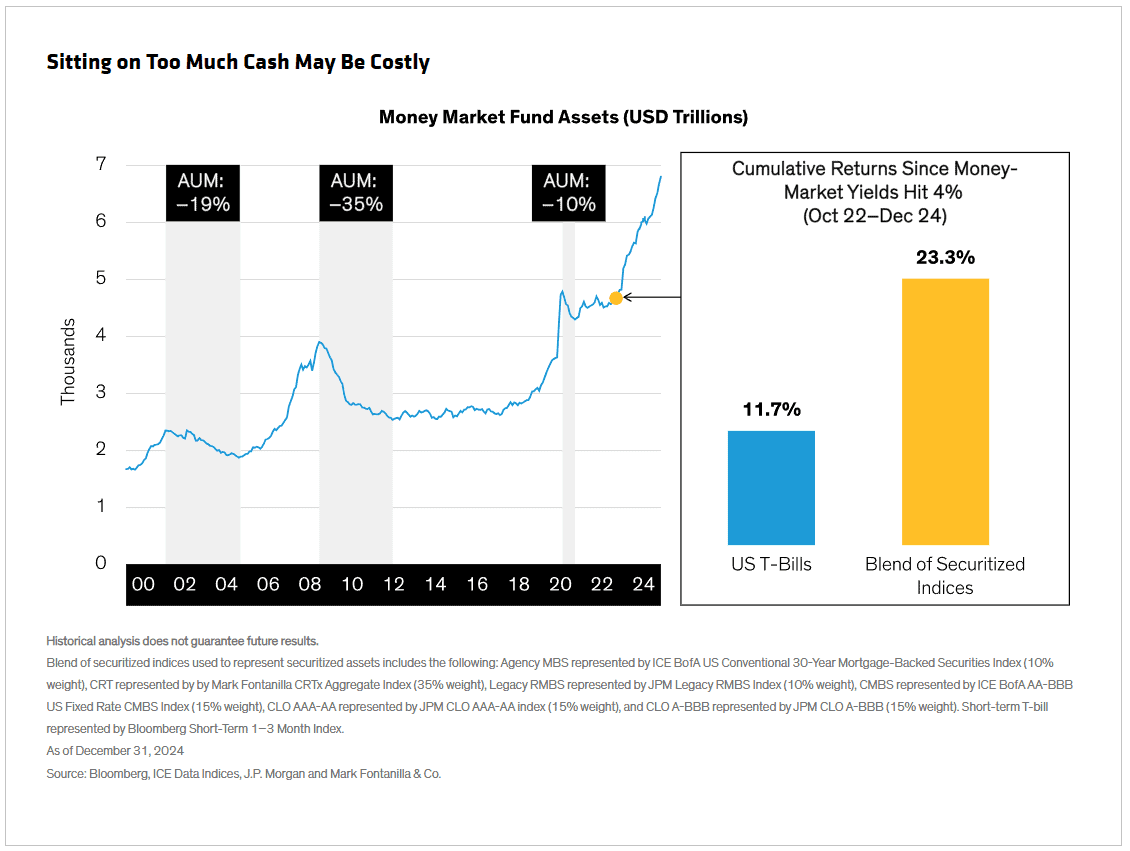- Below, we explain what asset securitization is and why it’s ideal for companies seeking liquidity for their investment projects.
- This content is aimed at financial advisors and asset managers who want to understand the details of asset securitization.
- FlexFunds offers an asset securitization program designed to enhance liquidity for investment strategies. For more information, feel free to reach out to our experts.
Large-scale investment projects often face a major hurdle: illiquidity. In other words, they can’t easily be converted into liquid funds ready to be used in other strategies. However, this issue can be addressed through a securitization process.
What is the securitization process?
Portfolio securitization is a financing mechanism that allows certain assets to be converted into marketable securities.
Also known as securitization, this tool provides liquidity to companies and enables them to leverage their projects—boosting market efficiency while reducing the need for intermediaries.
Among the various financing options available, securitization holds a key position by offering companies liquidity based on assets that are already generating income—or are expected to in the future—without having to issue equity or take on debt.
How does securitization work?
Through securitization, a portfolio of liquid or illiquid assets is repackaged and used as collateral to raise capital in the market through securities or bankable assets enabling companies to gain liquidity and move forward with their projects.
Securitization makes it possible to structure these securities based on the performance of assets such as real estate projects or others with “predictable cash flows expected to continue over the ordinary course of your business,” according to IDB Invest, a private-sector arm of the Inter-American Development Bank. In this case, it could be rental income from a specific property.
From another angle, it provides liquidity to companies by enabling them to raise funds through the issuance of securities backed by their portfolio, including bundles of mortgage or consumer loans.
In this type of securitization, the company sells the portfolio to an investor, thereby transferring both the payment rights and the returns.
IDB Invest notes that “the flows generated by the company are used to pay the debt service to the investors on the financing.”
Types of securities that can be issued
One of the most appealing aspects of securitization is its flexibility to apply to a wide variety of assets.
In fact, listed financial assets such as stocks and bonds, as well as derivatives like options and futures, can all be securitized.
It’s also possible to securitize commodities and intangible assets like intellectual property, using future royalties as collateral.
Moreover, loans and contracts—between individuals and/or legal entities—can be turned into exchange-traded products (ETPs).
Interestingly, mutual funds, ETFs, financial trusts, and hedge funds can also be securitized.
Empowering companies through financing
In today’s landscape, securitization brings renewed momentum to capital markets by allowing more players to participate through the creation of these securities, while also encouraging better circulation of resources.
For companies, securitization provides a way to leverage their projects and accelerate growth by gaining access to greater liquidity—without taking on additional debt, and with the added benefit of transferring part of the risk to the market.
According to U.S. investment management firm BlackRock, securitization is often misunderstood—whether due to its complex structure or its lack of prominence.
This perception can be largely traced back to its role during the 2008 financial crisis. At the time, the asset and mortgage securitization market contracted by nearly 80% amid the subprime mortgage crisis, according to a report by London’s International Financial Services (IFSL).
However, much has changed since then. So much so that “the securitized market has evolved into a robust sector that should be a staple in fixed income portfolios,” says BlackRock.

Structure of a portfolio securitization process
It’s worth noting that the securitization process for a portfolio is very straightforward with FlexFunds:
Step 1: Customized assessment and ETP design
Since securitization can be applied to a wide range of assets—both listed and private—it’s essential to conduct a thorough analysis of each case to deliver a tailored solution.
Once you connect with FlexFunds, an in-depth assessment and data collection process is carried out to develop a customized proposal.
Step 2: Due diligence and engagement letter
With the product structure defined, the risk committee reviews and evaluates the case.
Next, the engagement letter is signed—this is a contract that outlines the terms and conditions of the service, as well as the scope of FlexFunds’ responsibilities.
Step 3: ETP structuring and document review
During this phase, close collaboration with the client is essential to properly develop the documentation that defines the ETP. This step also includes onboarding the portfolio manager.
The structuring phase concludes once the key investment vehicle documents are drafted and reviewed, including the series memorandum, constituting instrument, and portfolio management agreement.
Step 4: ETP issuance and listing
At this point, the asset securitization becomes a reality. Your investment strategy has been packaged into an ETP. The next step is to list it and generate an ISIN/CUSIP to facilitate distribution.
The issuer is an Irish special purpose vehicle (SPV) created specifically for this purpose. The issuance is backed by the investment strategy itself, which serves as collateral.
Step 5: The ETP is ready for trading via Euroclear
The securitization process concludes with the issuance and listing of the ETP—meaning it is ready for distribution.
Investors can easily access ETP by purchasing the securities on Euroclear through their brokerage accounts, using a wide range of custodians and private banking platforms.
To learn more about FlexFunds and its asset securitization program, feel free to contact our team of specialists. We’ll be happy to assist you!
Sources:
- https://idbinvest.org/en/blog/financial-institutions/what-future-flow-securitization-and-what-are-benefits
- https://www.blackrock.com/institutions/en-us/insights/the-case-for-securitized-assets
- https://www.rtve.es/noticias/20090414/titulizacion-activos-hipotecas-cayo-todo-mundo-casi-80-2008/264266.shtml
- https://www.alliancebernstein.com/corporate/en/insights/investment-insights/why-it-may-be-time-to-lean-into-securitized-assets.html



